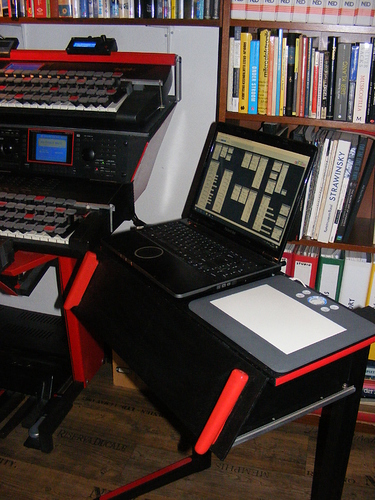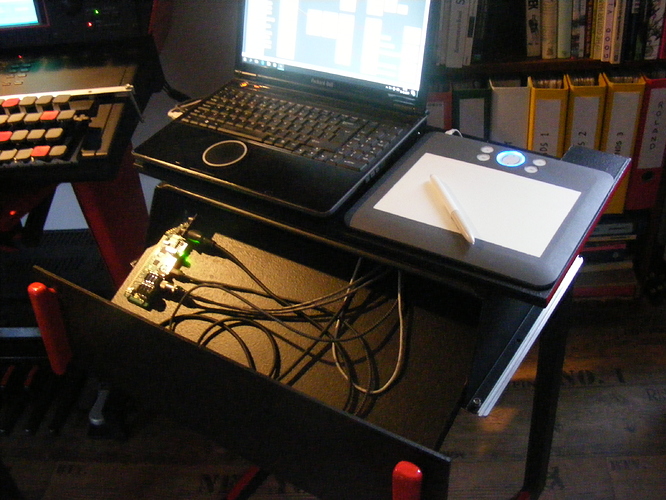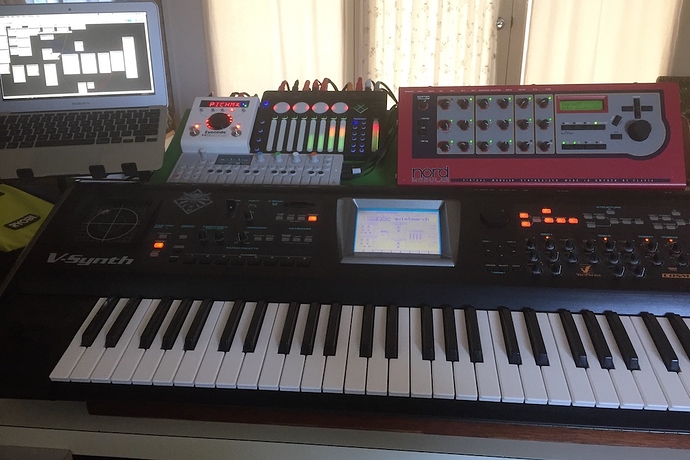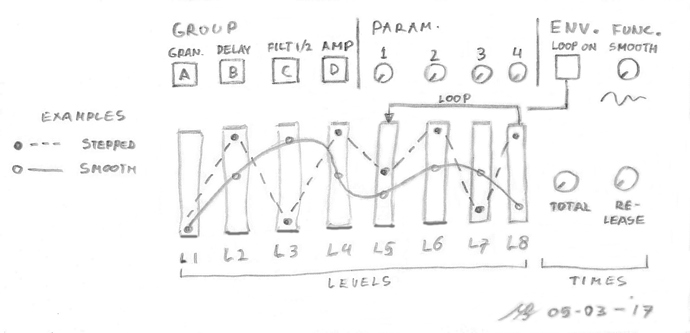When one Googles the subject one finds a lot of nifty and even sexy compact Axoloti enclosure examples. With all due respect for all the inventiveness though: Too me most of them look like the sort of solution you place between your QWERTY keyboard and a flower pot.
I am a bit of a megalomaniac myself. I love the idea of the Axoloti being the sort of, soft- AND hardware oriented, do it all system as first promised by those totally UN- affordable early 80ties computer music systems like the Fairlight and Synclavier (even if it isn't :-)).
Call me a diry knobbing fetishist but I find ergonomics very important anyway. When I am actually making music or programming sound I do not want to get bogged down by any desktop minimalism. So there is actually (some) sense behind my madness.
Here are my first results of going down the hardware road. This “high tech workstation” is actually based on an old school desk which I have been using as a keyboard stand for donkey years anyway. I have now reassembled it in a different manner, added a pull out drawer and repainted it in my Starship One ”house style”.
The advantages of such a layout are obvious enough. The whole thing now works as a general workstation anyway, keeping the living room table free as a bonus. And yes, the drawer is a bit big for one single Axoloti but I am still hoping for a future software update that drives a whole array of parallel Axoloti's with multichannel poly expression from one single main Live programming screen (please @Johannes!).
The next (hardware) step will be to turn the sloping front of the drawer between the grips (aren't they SO Arty and practical at the same time?) into a generic hardware control surface.
Any (productive) comments / opinions?





